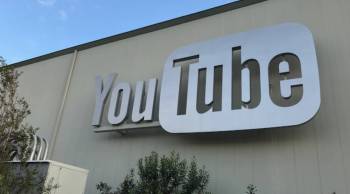
Creating your brand
Share Now on:
Creating your brand

Tess Vigeland: OK, so now you’re armed with some great ways to deal with the social side of being out of work. But we are not done with the career advice just yet. Whether you need a job or you’re just looking for a better one, you can increase your chances of career success by establishing your own “brand promise.”
According to marketing and career coach Tim Tyrell-Smith, you got to be able to sell yourself — just like Procter & Gamble sells detergent and Coca Cola sells fizzy drinks. So we invited youto write us for help with your brand promise. And Tim is here to provide that help. Thanks for joining us.
Tyrell-Smith: Thank you Tess. Great to be here.
Vigeland: We did go on Facebook and Twitter and asked people about this, and one person on Facebook said, “Living as a constant brand is no way to live a life.” Darcia Savy on Facebook said, “When do I have time to get my actual work done if I’m spending all this time building my personal brand?” So, let me ask you to address this skepticism.
Tim Tyrell-Smith: You know, I think that a lot of people have never experienced something like a job search or starting something from scratch where you really, truly have to do a great job introducing who you are and what you do. Usually, I get the biggest push back from people who have never been out of work. Because when you have been out of work, or you try to start a new business, everybody walks up to you and says, “So tell me about yourself. Tell me why I should hire you.” And I think if you can establish a brand early, and let it evolve and stay focused on it, I don’t think it takes a ton of time at all. In fact, you can live your brand, just like you live your life in a very authentic way. I think it’s something that everyone should really consider, especially in this new world where we have Twitter, we have Facebook, very quickly people are learning, or not learning, something about you.
Vigeland: All right, well, we asked some of our listeners to write in and tell us why they needed help creating a brand promise. And Rick Richards from Sacramento, Calif., is on the phone. He wrote to us on Facebook. Rick, meet Tim.
Rick Richards: Hello Tim.
Tyrell-Smith: Hey, Rick.
Vigeland: All right, so Rick, tell us what Tim can help you with.
Richards: Well Tim, I had opened a photography business in the beginning of 2008, and first half of the year it went great. Second half of the year like a lot of businesses it nose dived, crashed and burned with the economy. So I am back on the road driving trucks cross-country. But, I don’t want to do it the rest of my life and I do want to get back into the photography business.
Vigeland: Tim, walk us through that process helping Rick figure out what his brand promise is.
Tyrell-Smith: What I would like to do is I’d like to understand what aspect of photography do you love, and how can you take that aspect and turn it into something that allows people to truly understand “why you?” Is there a type of photography that you do better than anyone else? That needs to be communicated.
Vigeland: So, Tim, is this then more about what his skills are or is it about his passion? Is this a one-liner like, “Hi, I’m Rick, and this is what I love?”
Tyrell-Smith: Well, let me give you an example that positioning or brand statement I use when I talk about my marketing coaching business is: I help people do great things in a short amount of time. So, it’s aspirational and it also gives people specifics about what I can do for them. I don’t know Rick, if you’re on Twitter, but if you’re on Twitter, you’ve got 140 characters to get your point across.
Vigeland: Right.
Tyrell-Smith: And I would think about that in real life.
Richards: OK, that’s a 30-second interview.
Vigeland: Exactly.
Richards: The elevator speech.
Vigeland: Yeah, Tim is this kind of your elevator speech, is that what your brand promises?
Tyrell-Smith: It’s part of it, I would include my brand promises would introduce my elevator pitch, just the first words that would come out of my mouth, and I use the rest of my pitch to deliver my personality and deliver some details that are compelling and support that brand promise.
Vigeland: All right, Rick, you have your marching orders.
Richards: All right, thank you.
Vigeland: All right, next up we have John Decker and he’s a visual effects artist here in Los Angeles. Hey, John.
John Decker: Hey Tess. Hi Tim.
Tyrell-Smith: Hi John.
Vigeland: Now you wrote in because you told us that the thought of branding yourself makes you feel icky.
Decker: Yes, our industry is going very, very freelance, so more than ever, you have to be prepared to present yourself to people who may not know who you are, in many cases every six months, every nine months or at least once a year. So I sort of start to self-edit when I have to market myself. And then I feel like, “Oh man, I’m like total advertiser guy.” It just feels so icky.
Vigeland: Tim really, I think the question here is what is a way to pitch yourself, certainly with confidence, but not being irritating or seeming completely self-centered?
Tyrell-Smith: Well, I think one of the ways that I do that, personally, is I ask a lot of questions. So when I meet somebody for the first time, I will start asking them questions and spend no time at all talking about myself. And as I learn about other people, I can learn where I can adapt my message to that particular person. You know, if I ask somebody a question about what’s the last favorite movie you’ve seen — and I know, for example, John, that you’ve worked on “Alvin and the Chipmunks,” “Night at the Museum” — if they mentioned some of those movies, I could go, “Oh interesting, that’s what I do for a living.” And you start just a really interesting dynamic conversation based on what’s happening with them, not with you.
Decker: Yeah, I completely agree with what you’re saying so far, when you’re in the conversation presenting yourself. I think where I sort of hit the stumbling block is that in many cases, I have to sell myself before I get a chance to actually meet this person or talk to them, because you’re sending out the demo reel and the resume and you have to somehow rise to the top of the pile and get them to call you in for that first conversation.
Tyrell-Smith: Well, you bring up a really important point. It’s called social credibility. And what that means is that before you have even sent your information off, someone is aware of you, aware of something that you’ve done, where they’ve seen a tweet of yours, they’ve seen your Facebook page. John, I went and saw your personal website, and on your personal website I watched your reel. But I also saw a lot of other stuff I thought was, perhaps, distracting. The updates on your house, the trip to China.
Vigeland: Uh oh.
Tyrell-Smith: I would like to see your personal website be totally focused on your reel, your passion for film, visual effects. That to me was really powerful when I watched the stuff that you were involved in.
Vigeland: Fascinating.
Decker: OK.
Tyrell-Smith: It’s about building up that social credibility by introducing yourself to people, exposing your brand. I don’t know if you have your reel on your iPhone, if you have a smart phone, I’d be showing that to people all the time, because that really sells it for me is just seeing those amazing scenes that you either built or where a big part of.
Vigeland: Tim, it sounds like it is kind of a one-liner. This is your tag line.
Tyrell-Smith: Yeah, I went to your sites, your Facebook if you had it and all that stuff, and John, as I thought through all the stuff that I wrote about you, something like “I make movies more interesting,” it’s just probably not the right words exactly, but that compels me. That gets me leaning in a little bit. It makes me wonder what you mean by that. Unless you have a brand promise that you’re actively telling people, your brand is what people say it is, right? If you don’t act to manage your own brand, others will decide it for you.
Vigeland: All right, well thanks so much for chatting with us.
Decker: Thank you very much Tess. Thanks, Tim.
Tyrell-Smith: You’re welcome.
Vigeland: All right Tim, I almost hesitate to ask you this ’cause I’m a little afraid of the answer: Did you find anything about me that shouldn’t be out there?
Tyrell-Smith: You know, I haven’t done my full research on you, Tess. I did read your bio. One of the things I would say about you is I love your Twitter stream because you are actively engaging with your listeners. I’m assuming many of them are listeners.
Vigeland: Yes.
Tyrell-Smith: You’re also retweeting a lot of stuff. And that’s what people want social media to be: Is a chance to meet you and get to know you and maybe hear some comments about how your day was. I mean, that’s interesting for someone like you. You are a brand, like it or not.
Vigeland: I suppose I am. All right, Tim Tyrell-Smith is a career strategist and a blogger for U.S. News and World Report. His latest book is “HeadStrong: The Keys To A Confident And Positive Attitude During the Job Search.” Thanks so much for coming in, it’s been fun.
Tyrell-Smith: Thanks, Tess.
There’s a lot happening in the world. Through it all, Marketplace is here for you.
You rely on Marketplace to break down the world’s events and tell you how it affects you in a fact-based, approachable way. We rely on your financial support to keep making that possible.
Your donation today powers the independent journalism that you rely on. For just $5/month, you can help sustain Marketplace so we can keep reporting on the things that matter to you.


















